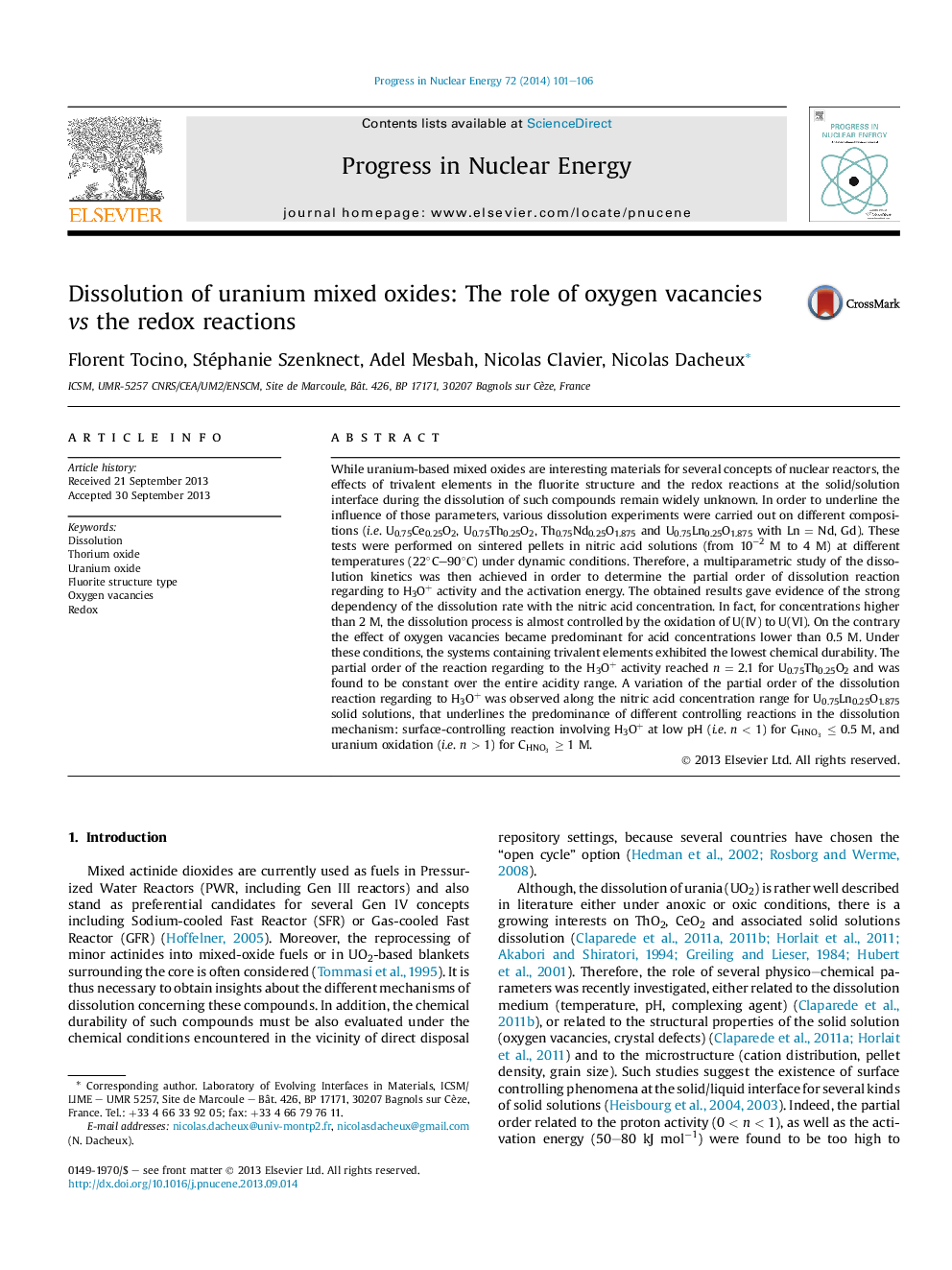| Article ID | Journal | Published Year | Pages | File Type |
|---|---|---|---|---|
| 1740691 | Progress in Nuclear Energy | 2014 | 6 Pages |
•The dissolution of several uranium or thorium bearing oxide solid solution was examined in nitric acid.•The role of the redox reaction during dissolution was underlined.•The impact of oxygen vacancies in the fluorite type structure was studied.•The activation energy and partial order related to proton activity associated to dissolution were determined.
While uranium-based mixed oxides are interesting materials for several concepts of nuclear reactors, the effects of trivalent elements in the fluorite structure and the redox reactions at the solid/solution interface during the dissolution of such compounds remain widely unknown. In order to underline the influence of those parameters, various dissolution experiments were carried out on different compositions (i.e. U0.75Ce0.25O2, U0.75Th0.25O2, Th0.75Nd0.25O1.875 and U0.75Ln0.25O1.875 with Ln = Nd, Gd). These tests were performed on sintered pellets in nitric acid solutions (from 10−2 M to 4 M) at different temperatures (22°C–90°C) under dynamic conditions. Therefore, a multiparametric study of the dissolution kinetics was then achieved in order to determine the partial order of dissolution reaction regarding to H3O+ activity and the activation energy. The obtained results gave evidence of the strong dependency of the dissolution rate with the nitric acid concentration. In fact, for concentrations higher than 2 M, the dissolution process is almost controlled by the oxidation of U(IV) to U(VI). On the contrary the effect of oxygen vacancies became predominant for acid concentrations lower than 0.5 M. Under these conditions, the systems containing trivalent elements exhibited the lowest chemical durability. The partial order of the reaction regarding to the H3O+ activity reached n = 2.1 for U0.75Th0.25O2 and was found to be constant over the entire acidity range. A variation of the partial order of the dissolution reaction regarding to H3O+ was observed along the nitric acid concentration range for U0.75Ln0.25O1.875 solid solutions, that underlines the predominance of different controlling reactions in the dissolution mechanism: surface-controlling reaction involving H3O+ at low pH (i.e. n < 1) for CHNO3CHNO3 ≤ 0.5 M, and uranium oxidation (i.e. n > 1) for CHNO3CHNO3 ≥ 1 M.
Graphical abstractFigure optionsDownload full-size imageDownload as PowerPoint slide
